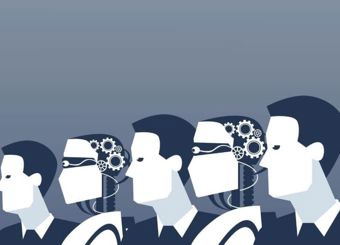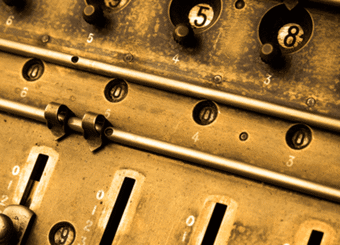What is blockchain?
Blockchain is the latest buzzword in the digital world, but many people still don’t completely understand the concept behind the term.
According to Pete Kinder, chief technology officer at Medius, blockchain means:
“A digital ledger in which transactions are made in bitcoin or another cryptocurrency are recorded chronologically and publicly”.
What does that mean to you and I?
Blockchain is an append-only transaction ledger, which means that the record can be written onto with new information but the previous data stored in blocks; can’t be changed.
Cryptography is used to secure the information in each block by linking the new blocks with each block before it, in such a way that any adjustment to the contents of a previous block invalidates the information in all blocks after it.
Blockchains are consensus-driven, meaning that all computers within the blockchain network must agree before any new transactions are added. Those adding the transactions must solve a mathematical equation which is sent to all computers (also known as nodes) for validation.
This decentralized approach ensures that no single entity can take control of the information in the blockchain. Blockchains can be publicly published and validated ensuring that recorded events took place.
How does blockchain work?
There are three components of blockchain:
- Private key cryptography;
- Distribution network that includes a shared ledger;
- A system to record the transactions and information related to the network.
First, you need everyone involved to have private and public encryption keys, which allows everyone to generate a unique and secure digital identity reference - providing control of ownership and enabling authentication.
Next, a distribution network that will accommodate authorization of transactions is required. This means you need a network of validators that will act as witnesses and agree that the same thing happened to authorize your transactions. This is certified by mathematical verification and is used to secure the network.
Finally, a system that will record all the information of the transactions related to the unique network is needed for blockchain to work successfully. The whole concept of blockchain relies on having a system network that will accommodate the transactions to be validated and recorded in multiple locations; making it very difficult for anyone to hack or interrupt the process.
Why is blockchain useful?
Blockchain was originally designed to ensure cryptocurrencies are both uniquely owned and still hold value to stop double-spending. However, there many other uses for blockchain.
How blockchain keeps records authentic can be applied to any database in the world and enables companies to track their invoices, contracts and goods without having to worry about unethical or criminal practices.
Examples of blockchain in action
There are many different industries and functions that are already using blockchain. For example, global shipping companies have been trialing blockchain to improve supply chain management, as it is very difficult to track shipments when many different organizations are involved.
A recent blockchain trial has been acknowledged as a success and a significant proof of concept, by PwC Australia and the Australian Chamber of Commerce and Industry. The blockchain platform used in the test improved productivity; while reducing costs and the complexity of international trade.
This was achieved by eliminating duplication and human error through digitization, as all information was recorded and shared via a decentralized ledger, instead of being stored physically with organizations in the supply chain.
The platform was designed to address many recommendations and concerns from Australia’s national freight and supply chain priorities inquiry report.
In addition, blockchain is being trialed in food distribution and food safety. The trial aims to track information like where the food comes from and how it was formed or produced.
Blockchain can help with:
- Food recalls – right now, it can take days to identify and track where food comes from, which makes recalls slow and therefore, can endanger more people. Blockchain technology can allow companies to track where produce came from immediately and, as such, expediting the recall process.
- Product labelling – businesses use labels such as ‘organic’ or ‘cruelty-free’ to differentiate food produce from competitors. However, as it stands, there is no real way to verify the authenticity of this produce without food testing and auditing. Blockchain can help uphold food quality and authenticity standards by leveraging reputation-based standards, within the blockchain itself, eliminating false reporting and boosting transparency in the food sector.
- Farm and distributor information - real-time access to commodity prices and market data can empower farmers to be more competitive and take advantage of changes in the market instantly. Blockchain connects buyers and brokers, allowing farmers to get better prices for their crops and reduced-rate loans. The aim is to democratize finance by providing agriculturalists with insight into load interest rates and commodity prices, all of which will be recorded on blockchain.
How can blockchain be used in the future?
There aren’t many limits as to how blockchain technology can be used. It started off as a way of tracking and controlling electronic currencies to prevent fraudulent activity, but new there are many different applications for it across many industries.
Document validation and auditing will always be desired and useful for most, if not all business functions. Granted, finance and procurement can see the potential benefits more clearly than marketing or sales, but that doesn’t mean the functionality isn’t relevant there too.
The new General Data Protection Regulations (GDPR) had an enormous impact on how B2B sales and marketing teams store data and communicate with their prospects. In theory, blockchain technology would be able to provide both functions with an uncompromised way of tracking all communications and validate any changes to contact data to ensure compliance.
Blockchain in procurement
Finance and procurement can benefit from using blockchain functionality.
For instance, blockchain can minimize the risk within invoice management. It can ensure that an invoice hasn’t changed between the moment a supplier submits it, to the time it is processed by the buyer. All changes would need to be approved by all participants and each change would be recorded as a new ‘block’, which in this case, would be a new invoice, giving an easy trail to follow if any uncertainties arise.
Other functions of your business, like contract management and supplier management teams, can also take advantage of blockchain technology.
As businesses expand and deal with multiple suppliers, contracts and supplier management can become difficult, complex and time-consuming. If organizations could eliminate fraudulent activities and could guarantee the contract agreed by both parties will stay intact until the end of the agreement, then supplier risk management would improve.
In addition, the decentralized nature of blockchain decreases the chances of cyber-attacks as it requires a lot of computer and manpower to hack the network to change one document.
Ultimately, anyone that requires a single view of truth to run a compliant and successful business should consider blockchain technology - just to see what it can do for them.
Downsides of blockchain
Blockchain requires many users for it to be useful, which can be costly. Additionally, the speed of the network will impact how many transactions can be recorded in an hour - and the slower the network the costlier the transactions will be.
Some may also struggle to implement blockchain technology because of existing processes and resistance to change. This is because not everybody wants to trust technology that has yet to have been proven to be successful.
Finally, blockchain doesn’t eliminate human error. It will only be successful if the information recorded is true in the first place, but people can make mistakes.
Blockchain technology can be used in various ways and help a variety of organizations and industries. Do you think blockchain can help your company or maybe you already use it? Let us know what you think about blockchain through our social media channels.






